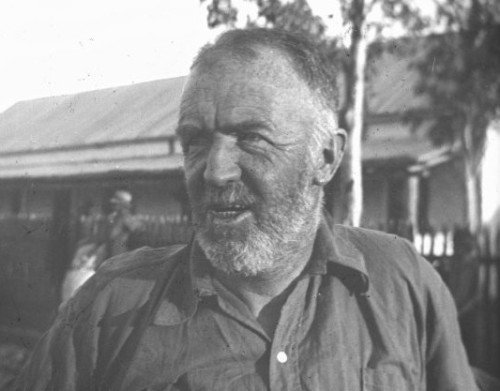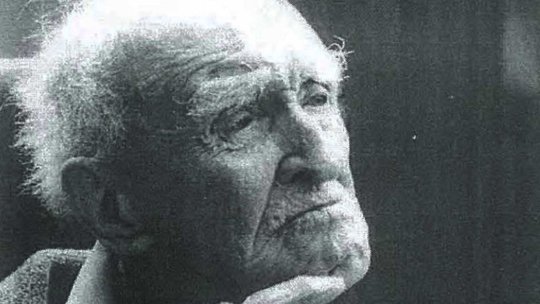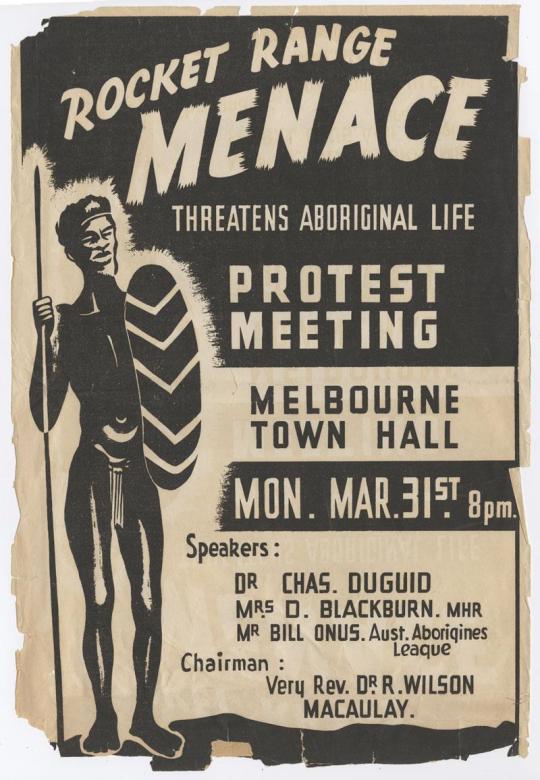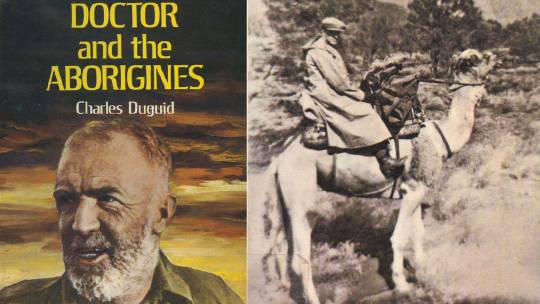#Aboriginal Australians
Explore tagged Tumblr posts
Text
i just wanna go on a little invasion day rant because i'm high rn and bored on the public holiday lol.
obviously i'm all for changing the date to honour the fact that this nation is stolen land and has been built on the neglected and abused backs of our beautiful indigenous people. Fuck the colony and fuck Peter Dutton.
but outside of that, Australia day is fucking stupid in general. "every country has a day" yeah and jan 26 is a stupid day. it is not a celebration of australia, it is a celebration of Britain and a bunch of dumbass boats. other nations' days are in honour of independent, culturally significant empowerment within a country's developmental history. ours is not a true representation of australia's initial development into a rich nation.
with that being said, i propose that the date of our country's national holiday be changed to july 9; the date the australian constitution was signed and we officially became a federation rather than a regionally divided, brit-ruled colonial prison island.
it celebrates our more formal, legislative beginning as a nation 'independent' of Britain and marked a more appropriate and realised encapsulation of australian views and policies. and, it allows jan 26 to be observed by indigenous people as the tragedy it really was.
idk, that's what i think and its just my opinion... but my opinion is correct lmao
a big fuck you to anyone that celebrated yesterday, and my heart goes out to all the aboriginal people mourning and struggling during this time <3
#ultravioletrayz#𖤓beyond violet𖤓#𖤓violets are blue𖤓#australia#invasion day#aboriginal australians#always was always will be#australia day#australian politics#indigenous rights#fuck peter dutton#indigineous people#australian aboriginal
30 notes
·
View notes
Text
For Australia, 26th January is invasion day, and that's literally it.
Today is a horrifically sad day in Australian history. Invasion day.
That's literally all it is.
Please please please do not join in the chorus of racism wishing anyone a "Happy Australia day" on the 26th of January
We can, have and are moving forward together as a country,
But we cannot truly do so if a celebration of our country and identity is held on the literal anniversary of the brutal and long-standing invasion, massacre and occupation of Australian aboriginals, the first peoples of Australia.
This invasion and subsequent violent Colonisation was full of many horrors that lasted well into the late twentieth century, and the long-standing repercussions of which have lasted to this day.
The stolen generations , in which generations - multiple generations of young aboriginal children were literally stolen by white colonists from their families, sent to missions, (detention boarding "schools ") , in which they were converted to Christianity and prepared for menial jobs, punished if they ever spoke their own languages, and subsequently put into the service of white families, with the intention to be bred out, never to see their families again. Never to be educated about their home, their families, their land, their culture, their languages, their history; they are the oldest continuing culture on earth. The last of these missions were in effect until 1969. By 1969, all states had repealed the legislation that allowed the removal of Aboriginal children under the policy and guise of "protection".
The indigenous health, longevity and poverty gaps still exist. Access to medicine, medical care, healthcare, a western education, all things we deem human rights by law, are not accessible to many rural communities still. They are provided, but in western ways, on western terms, with a gap of understanding how best to implement those services for an entirely different culture , that we do not have a thorough understanding of - that was what the referendum was about: , how best to implement the funds that are already designated to provide those services, because it's not currently working or usable by those communities. Our aboriginal communities are still not treated equally, nor do they have the same access we all enjoy to things like healthcare services, medicines and western education.
It is horrific and insensitive to therefore celebrate that day as our country's day of identity, because it's literally celebrating the first day and all subsequent days of the invasion, the massacres, the stolen generations, the subjugation and mistreatment, the inequalities that still persist today. It celebrates that day, that act committed on that day, of invasion , violent brutal massacres of Aboriginal people, as a positive, 'good' thing. As something that defines Australia's identity and should define an identity to be proud of.
That's nothing to be proud of.
Our true history is barely taught in our school curriculum, in both primary and secondary school. Not even acknowledged.
It needs to be.
We cannot properly move forward as a country until that truth is understood by every Australian, with compulsory education.
January 26th is Not 'Australia day'. It's Invasion day. It's a sorrowful day of mourning.
Please do not wish anyone a "happy Australia day " today.
It's not happy and it's not Australia day.
Australia day should be at the end of Reconciliation week that is held from the 23rd May to 3rd June.
A sentiment that is about all of us coming together as a shared identity within many identities, accepting and valuing each other as equal, a day that actually acknowledges Australian aboriginal peoples as the first Australians - because they are.
This is literally about acknowledging fact - that is the truth of Australian history. Aboriginal cultures should be celebrated and embraced, learnt from, not ignored, treated as invisible and especially not desecrated by holding celebrations of national identity on anniversaries of their violent destruction.
Australian aboriginal peoples, cultures and histories, should be held up as Australia's proud identity of origins, because it literally is Australia's origins.
That's a huge, foundational integral part of our shared identity that must be celebrated and acknowledged.
Inclusivity, not offensive exclusivity. Australia day used to be on 30th July, also 28th July, among others. Australia Day on the 26th January only officially became a public holiday for all states and territories 24 years ago, in 1994. It's been changed a lot before. It can certainly be changed so it can be a nonoffensive , happy celebration of our shared Australian national identity for everyone, that respectfully acknowledges and includes the full truth of our whole shared history, not just the convenient parts.
There is literally no reason it can't be changed, and every reason to change it.
#Always Was Always Will Be
#Australia#26th January#Invasion day#Important#Morality#Ethics#Australian aboriginal peoples#Always was always will be#Truth#Psa#Indigenous Australians#Indigenous Australia#Aboriginal Australians#Aboriginal children#Aboriginal people#Australian history#Australia day#Australian national identity#Inclusivity#Shared#Auspol
129 notes
·
View notes
Text




Charles Duguid was born on 6th April 1884 at Saltcoats, Ayrshire.
I only learned of this man 4 years ago, and have to say, if ever there was an apt name for a man “Dr Do Good” as he became known has that honour.
Duguid was the son of Charles Duguid, a teacher, and Jane Snodgrass Kinnier, daughter of Robert S. Kinnier, a surgeon, he attended Ardrossan Academy, where his father was Headmaster between 1882 and 1889, and the High School in Glasgow, before studying medicine at Glasgow University he gained a Master of arts in 1905 before going on to gain degrees in Medicine and surgery. Whilst teaching at Glasgow University, Duguid worked as a doctor in the slums of Glasgow, but in 1911 he signed on as ship’s surgeon for a voyage to and from Australia. This experience led him to emigrate to Australia in 1912. His early medical work in the Glasgow slums developed in him a compassion for the underdog which continued throughout his 102-year life.
After settling in Victoria and marrying an Australian lass, who tragically died in 1927, he remarried in 1930, both Duguid and his wife were idealists and humanitarians, the murder of a white man by Aboriginals at Landers Creek, Northern Territory, sparked Duguid’s interest in their rights.
The police shot 17 Aboriginals during the course of the hunt for the murderer, but official records at the time state that at least 31 people were killed. In 1934 he headed to Darwin, but missed his connection from Alice Springs after responding to a request to perform some emergency surgery there and stayed on for three weeks. He was appalled at the way Aboriginal people were treated there and by their poor living conditions.
Duguid’s wife Phyllis, founded the Aboriginal Advancement League in 1935 and Duguid served as President. In 1937, Duguid helped to found Ernabella Mission in the Musgrave Ranges of South Australia. He lectured and spoke in the UK as well as Australia and New Zealand about the conditions of the Australian Aborigines.
Duguid was active in other organizations concerned with the advancement of Aboriginal rights such as the Council for Aboriginal Rights and the Association for the Protection of Native Races. He also led the 1947 campaign against the establishment of a British-Australian rocket testing program at Woomera in the Central Australian Desert. He worked closely with Donald Thompson to inform the public of the harmful effect that this program would have on those people still living traditionally, nearby.
In addition to his work with Australian Aborigines, Duguid helped to found the Australian branch of the English-Speaking Union, of which he was Chairman in 1932. In 1935, he was elected Moderator of the Presbyterian Church of South Australia. Duguid died in Adelaide on December 5th, 1986 at the age of 102.
Check out this link for the full story of this good man http://adb.anu.edu.au/biography/duguid-charles-12440
12 notes
·
View notes
Text

[IMAGE ID: a large fonted poster that says in big bold letters "now more than ever" along the bottom it reads "national reconciliation week 2024 27 May to 3 June #NRW2024 reconciliation.org.au" END ID:]
oh wait it's transparent GUYS it's fine if you use light mode. but if you use anything but light mode you might need to just look at it a bit
happy reconciliation week!
for actually a really cool and awesome education program!
this is super cool!
actually everyone check this one out! ^^^
^^^^^ THIS EVERY MUTUAL READ ^^^^^
THIS LITERALLY NO JOKE! PLEASE DO I AM PUTTING THIS ON THE PINNED POST this is the best introduction to First Nations stuff I've seen for people who aren't Australian PLEASE LOOK AT IT EVEN IF BRIEFLY PLEASEEEE
I will be trying to post stuff every day this week but I will probably forget :( I'm never consistent but please guys have a look at this stuff!!!!!!
#-pop#activism stuff#national reconciliation day#first nations#indigenous peoples#uhhhhhhh what other tags I don't know#australian stuff#aboriginal Australians#resources#advocacy resources
8 notes
·
View notes
Text
Australians have resoundingly rejected a proposal to recognise Aboriginal people in its constitution and establish a body to advise parliament on Indigenous issues.
Saturday’s voice to parliament referendum failed, with the defeat clear shortly after polls closed.
To succeed, the yes campaign – advocating for the voice – needed to secure a double majority, meaning it needed both a majority of the national vote, as well majorities in four of Australia’s six states.
The defeat will be seen by Indigenous advocates as a blow to what has been a hard fought struggle to progress reconciliation and recognition in modern Australia, with First Nations people continuing to suffer discrimination, poorer health and economic outcomes.
More than 17 million Australians were enrolled for the compulsory vote, with many expats visiting embassies around the world in the weeks leading up to Saturday’s poll.
The vote occurred 235 years on from British settlement, 61 years after Aboriginal Australians were granted the right to vote, and 15 years since a landmark prime ministerial apology for harm caused by decades of government policies including the forced removal of children from Indigenous families.
The referendum had been a key promise that Labor party took to the federal election in 2022, when it returned to power after years of conservative rule.
Support for the voice to parliament had been strong in the early months of 2023, polling showed, but subsequently began a slow and steady decline.
26 notes
·
View notes
Text
Because it appears to have been forgotten in a matter of days. A reminder that the current leading political party of Australia, rejected an official investigation into the sexual abuse of indigenous children.
They campaigned for months for government representation for indigenous people, talking about healing and reconciliation, then four days later, they rejected a Royal Commision investigation into the abuse of indigenous children, and no one asked why!!!!!
Do they care about indigenous people or not?????
Or do they only want to talk about it when it can be a pretty campaign of smiles, music and ceremonies. They don't want to deal with the horror of toddlers being victims of pedophiles and children on the street because they have nowhere safe to go.
The government of this country disgusts me.
#australia#australian government#tw child abuse#tw pedophila mention#Australian Labor government#aboriginal australians#Indigenous Australians#at risk children
6 notes
·
View notes
Text
Taking the time to stop and really listen to the environment around them is part of what Miriam-Rose describes as dadirri — a form of deep listening and quiet still awareness. “It helps your spirit to be fulfilled,” Miriam-Rose says. “Sometimes when I say, you gotta slow down, let’s go and sit by the riverbank and watch the flow of the river and listen to the sounds of the bird or listen to the wind blowing through the leaves – some people cry, westerners, because they can’t see themselves slowing down.”
‘A link to the past’, ABC
4 notes
·
View notes
Text
1/16/2025: 4
0 notes
Text
A few days ago, I posted in a fantasy writer's forum about a short story I had started which was about the medieval Knights Templar looking for ancient treasure in Australia. The basic plot was going to be that one of the Templars, after witnessing his fellows commit atrocities against an Aboriginal community, broke away from them and allied with the Aboriginal people in defending their heritage against his former order. I thought it was an appealing plot at first, but then some other posters on the forum expressed concern that I, being a non-Aboriginal Australian person myself, would get Aboriginal cultures wrong and tried to talk me out of writing my story. Or at least it seemed they were trying to talk me out of it. One of them asked me "to ask myself why I wanted to write this story", and I can't help but read into that a wish that I not write what I wanted to write.
In all honesty, I don't like others discouraging me this way, especially when (as far as I could tell) none of these posters were Aboriginal Australians themselves. And I never bought that writing people from other cultures must always be off-limits, even if a certain degree of research is necessary to avoid lazy stereotypes. It is important to let people from certain cultures tell their own stories, but I don't see why that can't coexist with writers of any background choosing whatever setting inspires them.
1 note
·
View note
Text
Seeing a lot of posts about the Palestinian flag, and it got me thinking about indigenous flags around the world.
Māori:

Kalaallit Nunaat:

Haudenosaunee

Nunatsiavut:

Australian Aboriginal:

Torres Strait Islands:

Rapa Nui:

Kurdistan:

Sami:

Ainu:

Of course, these are just a handful. May they all reclaim their stolen lands.
#palestine#free palestine#indigenous people#ainu#sami#rapa nui#inuit#greenland#maori#australian aboriginal#kurds#kurdistan#colonialism#decolonization#land back
17K notes
·
View notes
Text
our humanity as Australian Aboriginal people has been questioned vigorously ever since whitefella came to our fucking lands and i'm going to be honest i don't give a fucking shit if your questions about Aboriginal people are purely from a scientific evolutionary standpoint: asking how or why Aboriginal people are considered to be Homo sapiens is the most racist dogshit way you could ever fucking ask your stupid question. As if us Aboriginal people don't have to deal with racist cunts saying that we're extinct or that we're not as evolved as everyone else because we never "progressed" past a certain point or some shit (as if "progression" was some how necessary for us to support our communities and live our lives the way we wanted to). it is the most tone-deaf racist fucking dumb shit i have ever heard. i am now demanding that non-Aboriginal people actually read the many many pdfs and articles that are out there, made by Aboriginal people and by different Australian government bodies about how to work with or communicate with Aboriginal people and what is/is not allowed to be asked and other BASIC FUCKING INFORMATION ABOUT ABORIGINAL PEOPLE because you whitefella are acting so out of fucking pocket that i truly believe that you need to read this shit so you actually start acting respectful when it comes to Aboriginal issues and you know HOW to actually talk about these issues without talking over us or being a shitcunt about it. and yeah one of the PDF's is 51 pages long. suck it up and read the whole thing and don't complain about it to me.
6K notes
·
View notes
Text

QuillSketch
6K notes
·
View notes
Text

A really rough sketch of an attempt at making an Australian Miku design 😅🇦🇺🖤💛❤️
I saw this trend going around on Twitter where people made Miku designs based of their countries and I wanted to participate in it 🥰
While I am Australian I am not Aboriginal/Indigenous ((Well, on my Mum’s side according to her family she has ancestors who are but I’m pretty sure that doesn’t count concerning me)) however I still wanted to include this aspect into my Australian Miku’s design as Aboriginal/Indigenous people were the first people of Australia, they are part of Australia’s history and because of that I felt that they should be included/represented too.
#Her outfit is suppose to represent both the Australian and Aboriginal flags#hatsune miku#international miku#vocaloid#hatsune miku fanart#my art
2K notes
·
View notes
Text

Khatija Possum Nampijimpa — My Great Grandmother's Country and Seven Sisters Dreaming (synthetic polymer paints on canvas, 2021)
#Khatija Possum Nampijimpa#australian aboriginal art#pleiades#australian indigenous art#aboriginal art
2K notes
·
View notes
Note
I saw your post in the thread about the Budj Bim creation myth, and you mentioned that you teach Ancient Civilizations and have a week on Australia and the Torres Strait Islands. I was wondering if you have any recorded lectures on this topic that are available anywhere online?
Or do you have any recommendations for freely available resources to learn more?
Hi there,
I'm so glad you're interested in this (and also so sorry it took me this long to answer)! I'm also tagging @four-ravens-in-a-trenchcoat because you sent a very similar ask.
I'm far from the expert, so I'm going to tag @micewithknives and @acearchaeologist who are both Australian archaeologists with far more knowledge than I. The lessons I've developed have been with their expertise as guidance.
I'll start out by linking to a short piece about Budj Bim and its eel traps being designated as a world heritage site and why that's important:
This page talks a little bit more about the eel traps, the creation story, and the Gunditjmara people who live there:
Unfortunately, I don't record my lectures, and sharing them would probably violate some privacy laws. I can, however, share the readings I give my students.
The week is broken into two class periods, and for each session I ask students to read one scholarly piece and one more pop culture one. The readings for the first part are:
Nunn, Patrick. 2018. “Australian Aboriginal Memories of Coastal Drowning.” In The Edge of Memory: Ancient Stories, Oral Tradition and the Post-Glacial World, 63–107. Bloomsbury Sigma. Clarkson, Chris, Ben Marwick, Lynley Wallis, Richard Law Kelaham Fullagar, and Zenobia Jacobs. 2017. “Buried Tools and Pigments Tell a New History of Humans in Australia for 65,000 Years.” The Conversation, July 19, 2017. https://theconversation.com/buried-tools-and-pigments-tell-a-new-history-of-humans-in-australia-for-65-000-years-81021.
and then for the second class:
Taçon, Paul S. C., Rosalie S. Chapple, John Merson, Daniel Ramp, Wayne Brennan, Graham King, and Alandra Tasire. 2010. “Aboriginal Rock Art Depictions of Fauna: What Can They Tell Us about the Natural History of the Greater Blue Mountains World Heritage Area?" https://doi.org/10.7882/FS.2010.008. Smithsonian Magazine. 2019. “A 42,000-Year-Old Man Finally Goes Home,” September 2019. https://www.smithsonianmag.com/history/mungo-man-finally-goes-home-180972835/.
The important part of this unit is that it comes right after we learn about the four classic river valley civilizations (Mesopotamia, the Indus, China, and Egypt). These "Big 4" all fit the description of the article I have them read at the very beginning of the class about the Key Components of Civilizations.
Australia week is about challenging that definition of civilization by examining where it came from, how it was developed, and who it excludes. At the end of the week I have students come up with another definition of Civilization that does not exclude Aboriginal and Torres Strait Islanders, Indigenous groups in North and South America, nomadic groups, etc.
The book (The Edge of Memory) by Patrick Nunn is a good one (for this class we only read the third chapter, but the entire book is worth a read.
Decolonizing Research Indigenous Storywork as Methodology is an edited volume that features perspectives on oral history from Indigenous people all over the world, including Australia.
Cheers, -Reid
158 notes
·
View notes
Text
That is SO neat!!!!!!!! What a fantastically interesting fact!!!!!!!!!!
Girl help I'm in a history museum and can't get out
536 notes
·
View notes